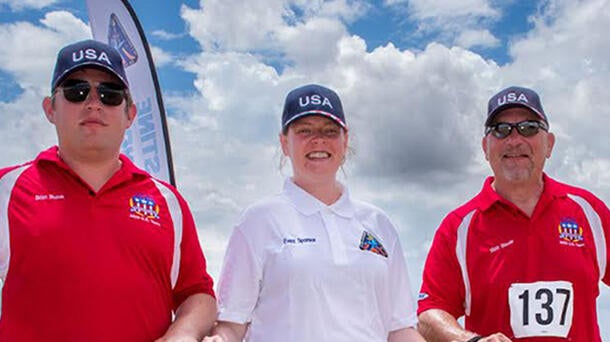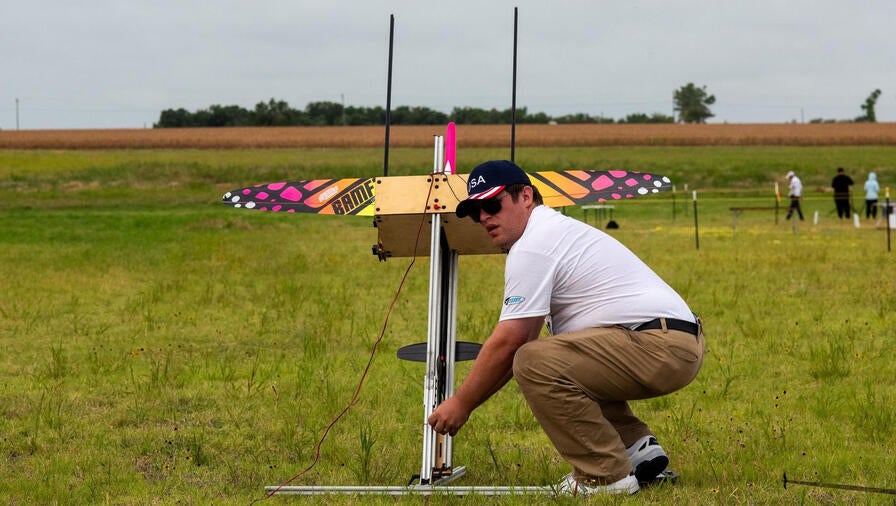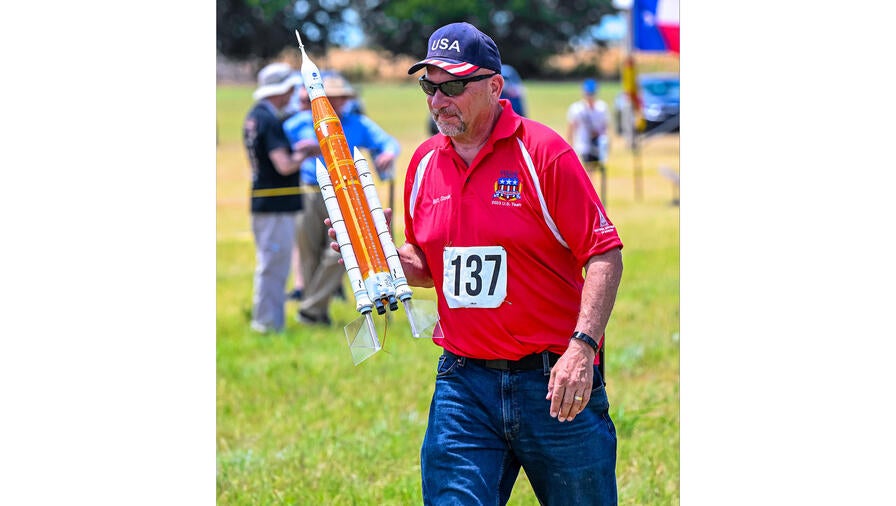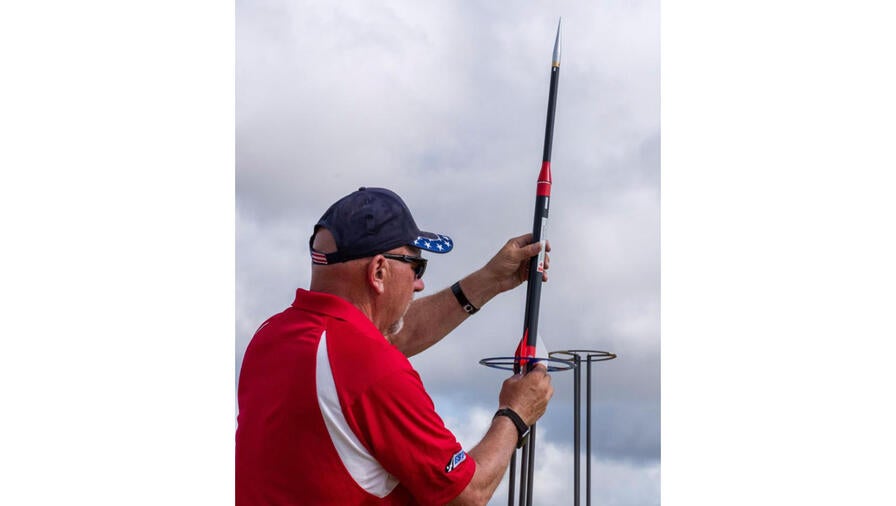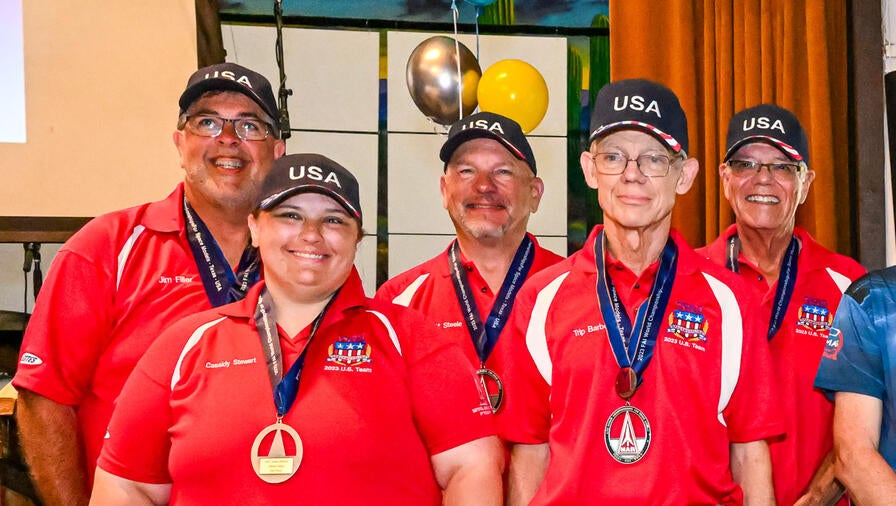It appears that home field advantage applies to model rocketry as much as it does to other sporting events.
Witness the Fédération Aéronautique’s 2023 World Championships for Space Models, held earlier this summer in Austin, Texas, where the U.S. team had its best showing ever, taking home 36 individual and team medals. It was the first time in 32 years that the biennial event, known as the Olympics of model rocketry, was held on U.S. soil.
The Aerojet Rocketdyne Foundation was a major sponsor and employees from Aerojet Rocketdyne, an L3Harris Technologies company, participated on three teams -- all of which medaled in their respective events.
“It was the most successful ever U.S. team in 50 years of competing,” said Matt S., business development director at Aerojet Rocketdyne’s Missile Solutions sector and assistant senior team manager. Matt would know: He’s been competing in the championships since 1980.
Matt entered two competition events: one in which scale models are judged on how much they look and fly like the real thing; and one where performance – specifically altitude – carries the most weight. He placed sixth individually in the former with a 3-foot model of NASA’s giant Space Launch System and ninth in the altitude competition with a model of a Black Brant sounding rocket that soared to a height of 300 meters. His teams took home the gold and silver in those events, respectively.
“It was really, really incredible,” Matt said. “This is the first time the U.S. scale team has won gold in 50 years of competition.”
Matt’s Aerojet Rocketdyne teammate, Brian M., senior engineer in mission architecture at the company’s Huntsville site, placed fifth individually in the class radio-controlled rocket glider event as part of a team that won the silver. The gliders must fly for at least six minutes after being launched – success takes skill in locating and exploiting rising air thermals – and land in a designated target zone.
“I feel like I flew the best I’ve ever flown,” said Brian, whose partner EB, also an Aerojet Rocketdyne employee, played a supporting role on the U.S. team. “I was actually in position for the [individual medal] podium except I had a mechanical failure on my last flight.”
The medal presentations are part of the Olympic-like pageantry that abounds at the World Championships for Space Models. Matt noted that the team from Ukraine paraded to close out the opening ceremonies, a privilege usually reserved for the host nation.
Unlike the Olympics, however, the U.S. team is not underwritten by the government, relying instead on private donations, said Matt, who led the fundraising. The Aerojet Rocketdyne Foundation stepped up with a $15,000 donation.
The foundation has doled out an average of $750,000 per year, mostly to STEM education-related activities in the communities surrounding Aerojet Rocketdyne’s 14 operating sites around the country, said Sara M., the foundation’s director.
“We want to invest in these types of programs,” said Sara, noting that such activities help fuel the pipeline of future employees. “We know that the reach is so widespread and we feel great about how well it aligns with our mission.”
Mentoring junior-team contestants is part of the fun, said Matt, who noted that many of the young participants from the recent past, including his daughter, have aged out. During the 2021 championships in Romania, he said, the U.S. junior team had only four members.
“This year we made a concerted effort to recruit new junior contestants beyond our sons and daughters,” Matt said. That effort was successful: On the 2023 team, the juniors outnumbered the seniors 26-24, he said.
That makes Matt optimistic as he ponders passing his U.S. team leadership role to someone younger, such as Brian.
“The future looks bright for competitive space modeling and U.S. participation,” Matt said.
